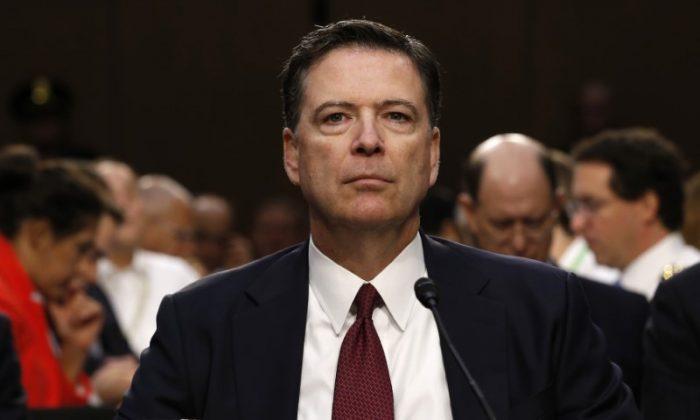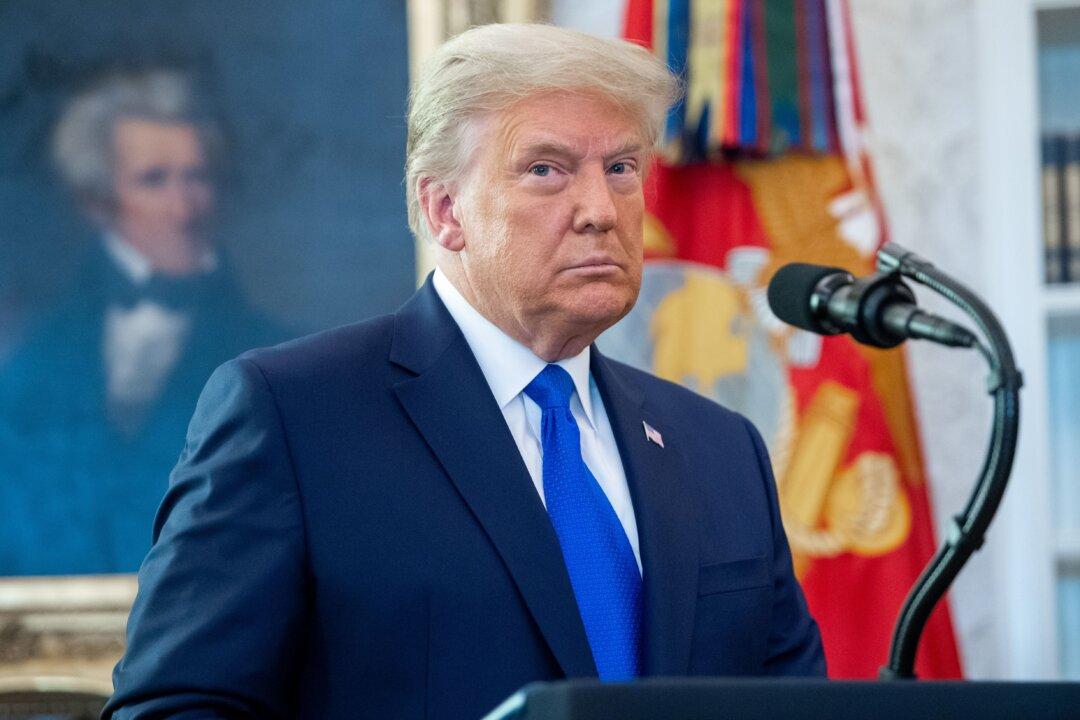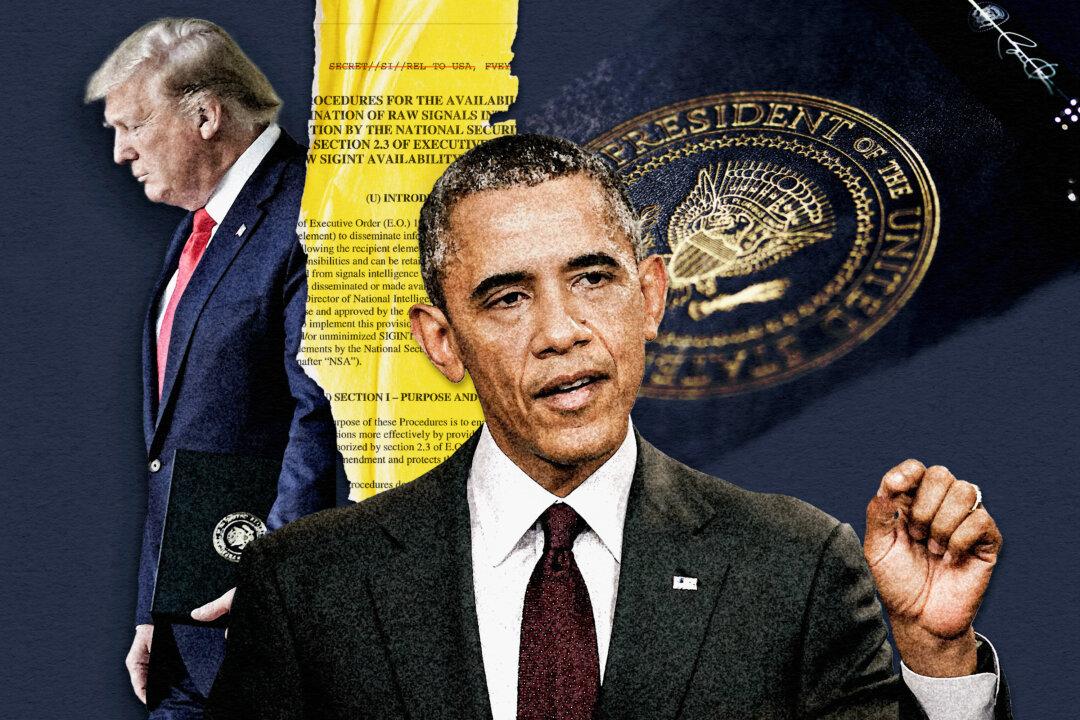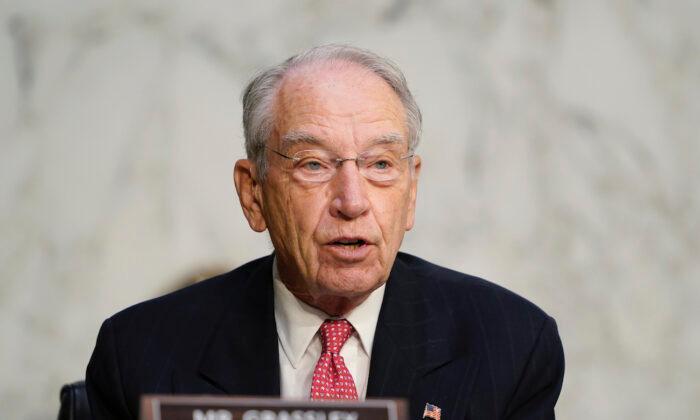Comey had told the IG that he believed the memos shared with his attorneys did not contain any classified information.
However, the IG noted that specifically: “Memos 1 and 3 contained information classified at the ‘SECRET’ level, and that Memos 2 and 7 contained small amounts of information classified at the ‘CONFIDENTIAL’ level—although Comey redacted all classified information in Memo 7 before sending to his attorneys.”
The IG report also noted that “Comey considered Memos 2 through 7 to be his personal documents.”
Comey maintained copies of Memos 2 through 7 at his personal residence—a fact that he failed to report to the FBI. Comey also provided James Rybicki, his chief of staff, with a copy of these same memos to maintain at FBI headquarters.
Leak to the Media
On May 16, Comey provided a copy of Memo 4 to Daniel Richman who was a “close personal friend” in addition to being one of Comey’s attorneys. Comey directed Richman to “share the contents of Memo 4, but not the Memo itself, with a specific reporter for The New York Times.”Richman did have a security clearance at this time, but there appears to be no demonstrable “need to know” that is also a requirement for gaining access to classified information.
This memo contained information that was deemed by the FBI to be “For Official Use Only” but did not contain any classified information. The IG noted: “We found no evidence that Comey or his attorneys released any of the classified information contained in any of the Memos to members of the media.”
Comey Kept Memos at His Home
The June 8, 2017, date is particularly notable because only the day before, on June 7, 2017, did Comey provide the copy of his memos that he kept in his home safe to the FBI at the request of Special Counsel Robert Mueller. Although the existence of the Comey Memos were well-known by this time, it does not appear that FBI personnel knew that Comey kept his own memo copies at home—until he turned them over.The IG report highlighted Comey’s retention of his memos at his personal residence, noting: “We found it particularly concerning that Comey did not tell anyone from the FBI that he had retained copies of the Memos in his personal safe at home, even when his Chief of Staff, the FBI’s Associate Deputy Director, and three SSAs [Supervisory Special Agents] came to Comey’s house on May 12, 2017, to inventory and remove all FBI property.” Why Comey chose to not disclose this information to the FBI remains unknown.
According to the IG report, “[O]n June 7, 2017, Comey provided the SSA who came to his home with Comey’s signed originals of Memos 2, 4, 6, and 7, which were the only Memos that Comey said he had retained at his residence.” Notably, the “SSA said he had been advised ahead of time that Comey had Memos to give to him.” The report does not disclose who advised the SSA, but it may have been Special Counsel Mueller.
Comey told the IG that “he voluntarily gave his signed originals of Memos 2, 4, 6, and 7 to the SSA at his house that day, not because he had concerns that they contained classified information, but “because Special Counsel [Robert Mueller] asked for them.”
How the Special Counsel came to learn that Comey had a personal copy of his memos at his house remains unknown, particularly as it appears that no one else within the FBI was aware of this fact until Comey turned the memos over.
Lisa Page Obtains Memos Ostensibly for McCabe
Others within the FBI also had copies of Comey’s Memos. According to the IG’s report, “Page told the OIG that McCabe also allowed her to look at Memos 2, 3, and 4, but asked her not to share them with anybody. Page told the IG that “she decided to make and keep copies of these Memos because they were ‘just of the nature that [she] felt like there should be one other copy somewhere else.’” Page claimed not to know “if others in the FBI were keeping copies of the Memos.”However, it appears that Page attempted to hide her possession of Comey’s Memos from other officials within the FBI. On May 10, 2017, Comey’s former chief of staff James Rybicki was contacted by Page who requested “a full set of the Memos.” Rybicki, who told the IG that Page said her request was made on behalf of Acting FBI Director Andrew McCabe, then made three copies of Comey’s Memos—one for himself, one for Page to pass along to McCabe, and one for FBI General Counsel James Baker. Notably, May 10, 2017, may have been the date that McCabe opened an investigation into President Donald J. Trump.
Page told the IG a somewhat different version of events, noting that “she did not think McCabe had asked her to assemble copies of the memos; she said she thought she did it on her own because she “knew that it needed to get done.” Additionally, Rybicki told the IG “that he was ’surprised‘ when he learned that Page already had copies of some of the Memos because he ’didn’t think anybody maintained a copy' other than him, and didn’t know how she got them.”
Whistleblower Provided IG Memos
Interestingly, “shortly after Comey’s removal, a set of the seven Memos was provided to the OIG by a Department employee, who claimed whistleblower status,” the IG revealed in the report. The number of individuals within the FBI who had access to Comey’s Memos was comprised of a very small group. The IG noted that the whistleblower “viewed the Memos as extremely sensitive documents and was concerned that there should be a separate set deposited somewhere for safekeeping.” This means that the IG obtained possession of the Comey Memos very early on—since mid-May 2017.Genesis of Comey’s Memos
In regards to the genesis of the Memos, Comey told the IG that it was his Jan. 27, 2017, dinner with President Trump that prompted him to begin the process of maintaining Memos detailing his interactions with the president. However, Comey had already written an earlier memo regarding a meeting with President Trump on Jan. 6, 2017, where Comey provided the president with details of the “salacious” information from the Steele dossier. Comey also told Congress a slightly different story, testifying on June 8, 2017, that he began creating memos from his very first interaction with President Trump, based on a “gut feeling.”The IG report provides some intriguing details surrounding the Jan. 6, 2017, meeting, and the manner in which that meeting was pre-determined to be fully documented by Comey.
“Witnesses interviewed by the OIG also said that they discussed Trump’s potential responses to being told about the ’salacious’ information, including that Trump might make statements about, or provide information of value to, the pending Russian interference investigation.
“Multiple FBI witnesses recalled agreeing ahead of time that Comey should memorialize his meeting with Trump immediately after it occurred. Comey told the OIG that, in his view, it was important for FBI executive managers to be ‘able to share in [Comey’s] recall of the ... salient details of those conversations.’ Comey also said that an additional concern, shared by the members of his management team, was that if the briefing became ‘a source of controversy’ it would be important to have a clear, contemporaneous record because Trump might ’misrepresent what happened in the encounter.'”
It appears from the IG’s report that President Trump had no knowledge that Comey was transcribing their interactions. The FBI’s General Counsel, James Baker, told the IG that “it was his understanding that the small group of people who had access to the Memos ’really didn’t want anyone to know the Director ... was recording at this level of detail his interactions with the President‘ because any perception that Comey was ’keeping ... book' on the President would upset any effort to have an effective and ongoing working relationship.”
It should also be noted that Comey failed to keep any memos of his meetings with Obama and other Obama-era officials.
Memo 3 was one of those deemed to contain information classified at the “SECRET” level. In regards to this particular memo, Comey told the IG that he gave one copy to Rybicki, with instructions for Rybicki to show it to McCabe and Baker, while keeping the other copy in his desk drawer—located in his secure office. On May 10, 2017, the day immediately following Comey’s firing, a Supervisory Special Agent (SSA) was assigned to inventory the contents of Comey’s office. As noted in the IG report, “According to the inventory, no hard copies of any of the Memos were found in Comey’s office.”
Comey Violated FBI Policy
The IG found that “Comey’s actions violated Department or FBI policy, or the terms of Comey’s FBI Employment Agreement” and concluded that “Comey’s retention, handling, and dissemination of certain Memos violated Department and FBI policies, and his FBI Employment Agreement.”The IG recognized that the “responsibility to protect sensitive law enforcement information falls in large part to the employees of the FBI who have access to it through their daily duties” and pointedly noted that “Comey failed to live up to this responsibility.”
The IG’s report also noted, “By not safeguarding sensitive information obtained during the course of his FBI employment, and by using it to create public pressure for official action, Comey set a dangerous example for the over 35,000 current FBI employees—and the many thousands more former FBI employees—who similarly have access to or knowledge of non-public information.”
To underscore the difficulties the DOJ faced in pursuing a successful prosecution is the fact that Comey’s Memos were only classified by the FBI after Comey had leaked them. Additionally, the IG found no proof that “Comey or his attorneys released any of the classified information contained in any of the Memos to members of the media.”
A failed prosecution at this juncture would prove problematic to the overall investigation of Spygate. The IG’s pending report on FISA abuse is far more important and potentially significantly more damning.







